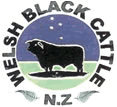 |
|||||||||
New Zealand Cattle Breeders Associations and Societies |
||||||||||||||||
|
|
||||||||||||||||
 |
 |
Ayrshire New Zealand |
||||||||||||||
| The first Ayrshire arrived in New Zealand in 1848, and in 1998 Ayrshire New Zealand celebrated 150 years since the first landing at Otago. | ||||||||||||||||
|
|
||||||||||||||||
 |
Blonde
d'Aquitaine Society of Australia and New Zealand |
|||||||||||||||
| In Australia and New Zealand, Blondes are making a substantial impact in Prime cattle and carcase competitions. There are over 2000 active purebred females spread throughout both countries, and stud calf registrations have been steadily increasing every year. | ||||||||||||||||
|
|
||||||||||||||||
 |
Brown Swiss Cattle Breeders Association of New Zealand |
|||||||||||||||
| Formed at Kaponga on 13th February 1973, for the purpose of introducing the breed to New Zealand. Imported Brown Swiss semen was not available for the spring that year, so the first mating took place in 1974 with the first half-breed calves being born in 1975. | ||||||||||||||||
|
|
||||||||||||||||
 |
Charolais Breeders New Zealand |
|||||||||||||||
| Charolais Cattle in New Zealand have been developed over 37 years to provide cattlemen with profitable beef production. | ||||||||||||||||
|
|
||||||||||||||||
| • |  |
Galloway Cattle Society of New Zealand | ||||||||||||||
| The Galloway Cattle Society of New Zealand is an incorporated Society which aims to promote the use of the Galloway breed within New Zealand and maintain the integrity of the breed. | ||||||||||||||||
|
|
||||||||||||||||
New Zealand Hereford Association |
||||||||||||||||
| The first volume of the New Zealand Hereford Herd Book was published in 1889, carrying on from Volume 4 of the Canterbury Agricultural and Pastoral Association’s Herd Book. | ||||||||||||||||
|
|
||||||||||||||||
 |
New Zealand Highland Cattle Society |
|||||||||||||||
| Highland cattle are descended from the the wild "Kyloe" which lived on the remote rugged islands off the west coast of northern Scotland. | ||||||||||||||||
|
|
||||||||||||||||
 |
New Zealand Holstein-Friesian Association |
|||||||||||||||
| The Holstein-Friesian breed approximates 60% of New Zealand's national dairy herd | ||||||||||||||||
|
|
||||||||||||||||
 |
Jersey New Zealand |
|||||||||||||||
| New Zealand has the largest population of Jerseys in the world with some 800,000 Jerseys of all ages. At June 2005 there are 580,000 milking Jersey cows in the national herd of 3.9 million milking cows (15%). | ||||||||||||||||
|
|
||||||||||||||||
| Simmental NZ | ||||||||||||||||
| The Simmental breed was imported into New Zealand in the early 1970's. A very few purebred females were imported and the new technology of artificial insemination became internationally accepted about the same time. | ||||||||||||||||
|
|
||||||||||||||||
 |
South Devon Cattle Society of New Zealand |
|||||||||||||||
| First introduced to NZ in 1969, their role in cross breeding for beef herd improvement is now firmly established with 56 studs nation-wide supplying bulls for this purpose. | ||||||||||||||||
|
|
||||||||||||||||
 |
Welsh Black Cattle Breeders Society of NZ |
|||||||||||||||
| In New Zealand, two of the three breeders who began the importation of Welsh Blacks into the country in the early 1970s are still breeding Welsh Blacks as stud cattle and commercially, and the third has retired from livestock farming. | ||||||||||||||||

|
||||||||||||||||
| home | agri-services | pedigree
pen | news | dairy | beef | machinery property | organisations | site map |
||||||||||||||||